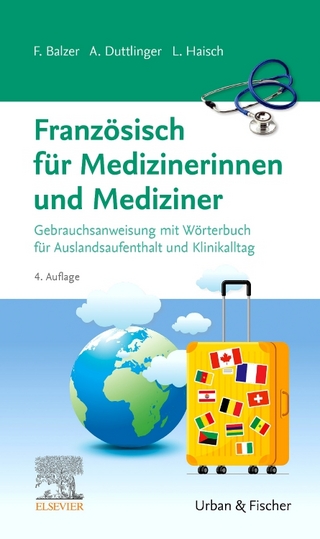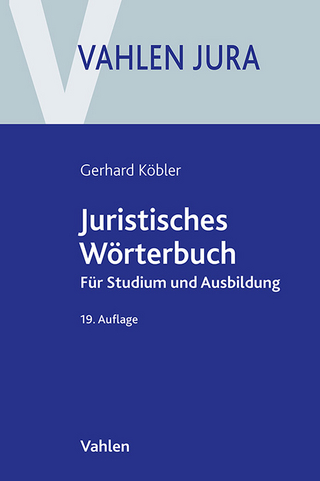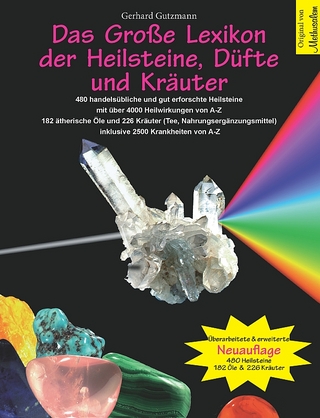
Pocket Keys for Writers, Spiral bound Version (with 2016 MLA Update Card)
Wadsworth Publishing Co Inc (Verlag)
978-1-337-28693-0 (ISBN)
Ann Raimes, a respected authority on writing, research, grammar and ESL, created the KEYS FOR WRITERS family of handbooks (Cengage Learning) to be the most accessible, user-friendly handbooks available. Susan K. Miller-Cochran, now Executive Director of General Education at The University of Arizona, helped shape the writing programs at The University of Arizona from 2015–2020 and North Carolina State University from 2007–2015. Prior to that, she was a English/ESL faculty member at Mesa Community College in Arizona. Dr. Miller-Cochran served as president of the Council of Writing Program Administrators (2015–2017). Her work focuses on the intersections of technology, second-language writing and writing program administration. A widely published and popular presenter, Dr. Miller-Cochran is also a co-author with Rochelle L. Rodrigo on the CENGAGE GUIDE TO RESEARCH (Cengage Learning). She received both her Master of Teaching English as a Second Language (MTESL) and her Ph.D. in English, with a concentration in Rhetoric/Composition and Linguistics, from Arizona State University.
Part I: WRITING IN COLLEGE.
1. The Writing Process in Context.
Your purpose. Your audience. Your voice. Your use of media. Revising and editing.
2. A Framework for Critical Thinking.
3. Reading and Writing Arguments.
A debatable claim (thesis). Reasons and evidence. Areas of common ground. Visuals.
Model paper 1: A student''s argument essay (MLA).
4. Presentation Matters.
How to present your work. Text (color, lists, headings). Photos and images. Data (tables, graphs, charts). Oral and multimedia presentations, PowerPoint, e-portfolios. Multimodal composition.
Part II: RESEARCH: FINDING AND EVALUATING SOURCES.
5. How to Search for Information.
Primary and secondary sources. Starting the search. Starting points. Keyword searching. Visual sources. Google. Digital tools. Online alerts.
6. How to Evaluate Sources.
Reading critically. Evaluating sources. Recognizing a scholarly article.
Part III: USING AND CITING SOURCES: WRITING WITHOUT PLAGIARIZING.
7. Citing Your Sources.
Why, how, and what to cite. Avoiding plagiarism. Keeping track of sources. Bibliographic software, databases.
8. How to Use and Integrate Source Material.
Organization with ideas, not sources. Summarizing and paraphrasing. Quoting. Integrating source citations. Showing the boundaries of a source citation.
Part IV: DOCUMENTING SOURCES.
9. MLA Style.
Index of MLA Style. Basic features. Citing sources. MLA list of works cited. Print books (Source Shot 1). Print articles (Source Shot 2). Online databases (Source Shot 3). Web sources. Visual, performance, multimedia, miscellaneous sources.
Model paper 2: A student''s research paper, MLA style.
10. APA Style.
Index of APA Style. Basic features. Citing sources. List of references. Print books and parts of books. Print articles (Source Shot 4). Online sources (Source Shot 5). Visual, multimedia, miscellaneous sources.
Model paper 3: A student''s research paper, APA style.
11. Chicago Style.
Index of Chicago Style. Basic features. Citing sources. Endnotes and footnotes. Print books. Print articles. Online sources. Audiovisual, multimedia, miscellaneous sources. A student''s Chicago bibliography.
Model paper 4: Samples from a student''s Chicago research paper.
Part V: THE FIVE C''S FOR CLEAR STYLE.
12. Cut.
Wordiness. Formulaic phrases. References to your intentions.
13. Check for Action (“Who''s Doing What?”)
“Who''s doing what?”. Sentences beginning with there or it. Unnecessary passive voice.
14. Connect.
Consistent subjects. Transitional words. Variety in connecting ideas.
15. Commit.
Confident stance. Consistent tone.
16. Choose Your Words Carefully.
Vivid and specific words. Slang, regionalisms, and jargon. Biased and exclusionary language.
Part VI: COMMON SENTENCE PROBLEMS.
17. FAQs about Sentences.
18. Fixing a Sentence Fragment.
What a sentence needs. Turning fragments into sentences. Beginning with and, but, or. Intentional fragments.
19. Fixing a Run-on or Comma Splice.
Identifying. Correcting.
20. Untangling Sentence Snarls.
Mixed constructions, faulty comparisons, convoluted syntax. Misplaced modifiers. Dangling modifiers. Shifts. Logical sequence after the subject. Parallel structures. Is when and the reason is because. Necessary and unnecessary words.
21. Using Verbs Correctly.
Verbs in Standard Academic English. Auxiliary verbs. Verbs commonly confused. Verb tenses. -ed forms (past tense, past participle). Conditional sentences, wishes, requests, demands, recommendations. Active and passive voices.
22. Making Subjects and Verbs Agree.
Basic principles. Words between subject and verb. Subject following the verb. Eight tricky subjects. Collective nouns (family, etc.). Compound subjects (and, or, nor). Indefinite pronouns (anyone, etc.). Expressing quantity (much, etc.). Relative clauses (who, which, that).
23. Using Pronouns.
Which to use (I/me, he/him, etc.). Specific antecedent. Agreeing with antecedents. Using you. Relative pronouns (who, whom, which, that).
24. Adjectives and Adverbs.
Forms. When to use. Hyphenated (compound) adjectives. Double negatives. Comparatives and superlatives.
Part VII: PUNCTUATION AND MECHANICS.
25. Punctuation Shows Intent.
26. Commas.
27. Apostrophes.
28. Quotation Marks.
29. Other Punctuation Marks.
30. Italics and Underlining.
31. Capitals, Abbreviations, and Numbers.
32. Hyphens.
Part VIII: WRITING ACROSS LANGUAGES AND CULTURES.
33. Standard Academic English.
Cultures and Englishes. Spoken varieties and Standard Academic English.
34. Nouns and Articles (A, An, The).
Types of nouns. Basic rules. The for specific reference. Four questions to ask about articles.
35. Infinitive, -ing, and -ed Forms.
Verb + infinitive. Verb + -ing. Preposition + -ing. Verb + infinitive or -ing. -ing or -ed adjectives.
36. Sentence Structure and Word Order.
Basic rules. Direct and indirect objects. Direct and indirect questions. Although and because clauses.
Part IX: WORDS TO WATCH FOR.
37. Glossary of Usage.
Index.
Editing Marks.
| Erscheinungsdatum | 11.11.2016 |
|---|---|
| Verlagsort | Belmont, CA |
| Sprache | englisch |
| Maße | 120 x 227 mm |
| Gewicht | 295 g |
| Themenwelt | Schulbuch / Wörterbuch ► Lexikon / Chroniken |
| Schulbuch / Wörterbuch ► Wörterbuch / Fremdsprachen | |
| Sozialwissenschaften ► Pädagogik | |
| ISBN-10 | 1-337-28693-1 / 1337286931 |
| ISBN-13 | 978-1-337-28693-0 / 9781337286930 |
| Zustand | Neuware |
| Haben Sie eine Frage zum Produkt? |
aus dem Bereich


